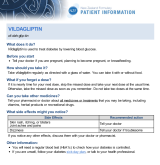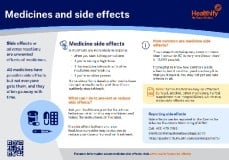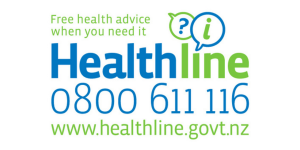Vildagliptin
Also called Galvus
Key points about vildagliptin
- Vildagliptin is used to treat type 2 diabetes.
- Vildagliptin is also called Galvus.
- Find out how to take it safely and possible side effects.

Vildagliptin is a medicine used to treat type 2 diabetes. It may be used by itself, or it may be combined with other diabetes medicine such as metformin (see Galvumet).
Vildagliptin works by increasing the amount of insulin produced by your body and reducing the amount of glucagon produced by your pancreas. Glucagon causes your liver to produce more glucose, so by reducing the amount of glucagon in your body, this also helps to reduce the levels of glucose in your blood. Read more about type 2 diabetes.
In Aotearoa New Zealand vildagliptin is available as tablets (50 mg).
- The usual dose of vildagliptin is 1 tablet once a day or 1 tablet two times a day.
- Always take vildagliptin exactly as your healthcare provider has told you. The pharmacy label on your medicine will tell you how much to take, how often to take it, and any special instructions.
- Timing: Take vildagliptin once or twice a day. Vildagliptin is usually taken once a day, in the morning. If you take it two times a day, take your first dose in the morning and the second dose in the evening. Take your medicine at about the same time each day.
- Swallow your tablets whole, with a drink of water: You can take vildagliptin with or without food. If you have problems swallowing the tablets, talk to your healthcare provider or pharmacist. Read more about tips for swallowing tablets and capsules.
- Missed dose: If you forget your dose, take it as soon as you remember that day. But, if it's nearly time for your next dose, just take the next dose at the right time. Do not take 2 doses at the same time.
- Stay well hydrated: make sure you drink enough water and stay well hydrated while you are taking vildagliptin.
- Limit or avoid alcohol while you are taking vildagliptin: Alcohol may affect your blood glucose control and increase your risk of side effects such as nausea and dizziness. Read more about diabetes and alcohol.
- Keep taking vildagliptin regularly: To control your diabetes, you must keep taking vildagliptin every day. Do not stop taking vildagliptin suddenly – speak to your healthcare provider before stopping.
Here are some things to know when you're taking vildagliptin. Other things may be important as well, so ask your healthcare provider what you should know about.
Have a sick day plan for when you're unwell
If you have diarrhoea (runny poo) or are vomiting (being sick) from a stomach bug, or are dehydrated, it’s important to let your healthcare provider know, as they may advise you to stop taking vildagliptin for a few days and start again when you are eating and drinking normally. Read more about having a diabetes sick day plan.
Taking other medicines
Vildagliptin can interact with some medicines, herbal supplements and rongoā Māori, so check with your healthcare provider or pharmacist before starting vildagliptin and before starting any new products.
Blood tests and monitoring
You’ll have regular blood tests to check how well your vildagliptin is working and to check your liver.
If you're pregnant, trying for a baby or breastfeeding
It's important to talk to your healthcare provider as soon as possible if you're trying to get pregnant, are pregnant (hapū) or breastfeeding. You may need to change to another medicine.
Like all medicines, vildagliptin can cause side effects, although not everyone gets them. If you're concerned about any symptoms you think might be related to your medicine, talk to your healthcare provider. The following information offers some guidance but doesn't include all possible side effects.
Common side effects
- Nausea (feeling sick).
- Dizziness.
- Diarrhoea (runny poo).
- Runny nose, congestion, sneezing.
- Headache.
- Joint or back pain.
- Constipation.
Tell your healthcare provider immediately or phone Healthline free on 0800 611 116 if these occur
- Skin rash, itching, or blisters.
- Swollen hands or feet.
- Signs of problems with your pancreas such as ongoing and severe stomach (tummy) pain.
- Signs of problems with your liver such as tummy pain, skin and eyes turn a yellow colour, itchy skin, pee is a dark colour, poo is a pale colour.
Read more about medicines and side effects and reporting a reaction you think might be a side effect.
Galvus(external link) Medsafe Consumer Information, NZ
Vildagliptin patient information(external link) NZ Formulary, NZ
Brochures
Vildagliptin(external link) My Medicines, NZ, 2019 te reo Māori(external link)
5 questions to ask about your medications(external link) Health Quality and Safety Commission, NZ, 2019 English(external link), te reo Māori(external link)
Medicines and side effects [PDF, 91 KB] Healthify He Puna Waiora, NZ, 2024
References
- Vildagliptin(external link) NZ Formulary, NZ
- Prescribing vildagliptin for type 2 diabetes(external link) Diabetes Toolbox BPAC, NZ, 2021
- Possible risk of vasculitis with vildagliptin products (Galvus, Galvumet)(external link) Medsafe, NZ, Feb 2022
Brochures


Medicines and side effects
Healthify He Puna Waiora, NZ, 2024

Health Quality and Safety Commission, NZ, 2019 English, te reo Māori
Credits: Healthify He Puna Waiora Pharmacists. Healthify is brought to you by Health Navigator Charitable Trust.
Reviewed by: Angela Lambie, Pharmacist, Auckland
Last reviewed:





